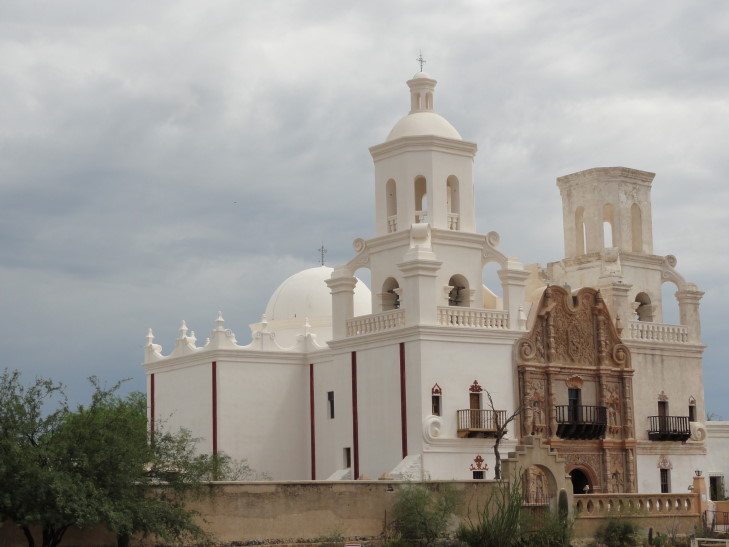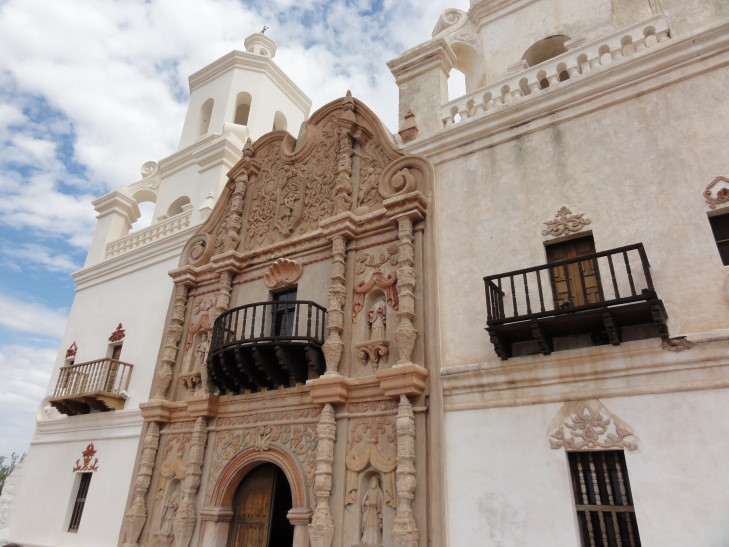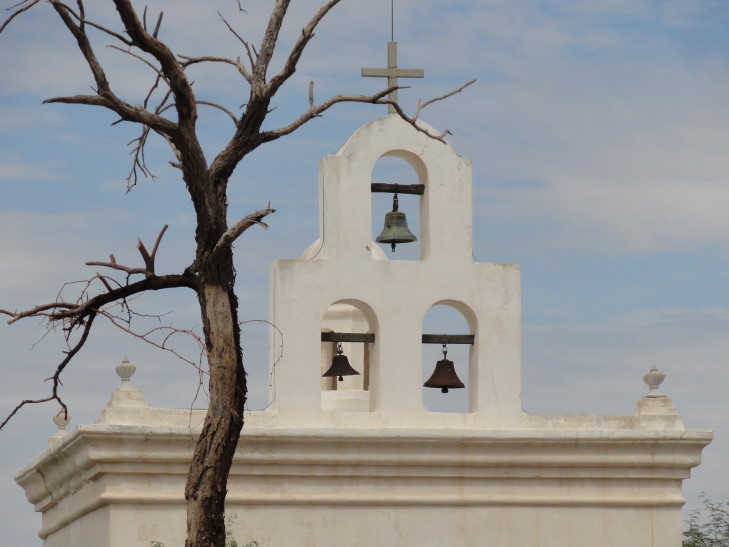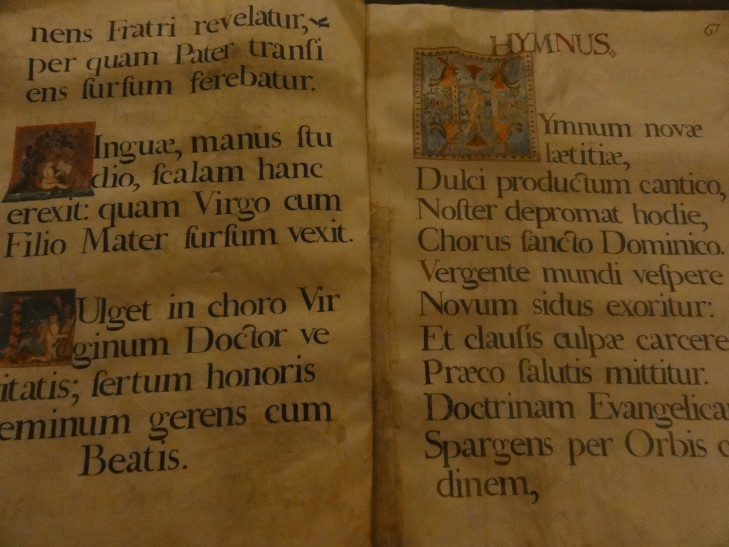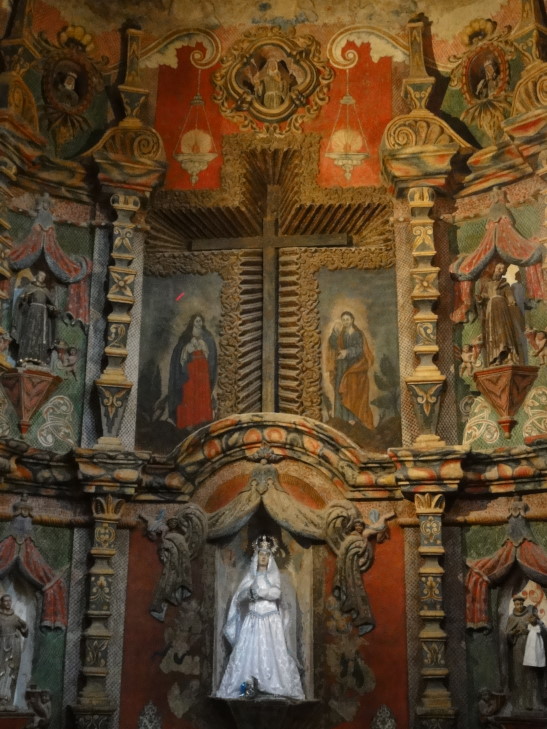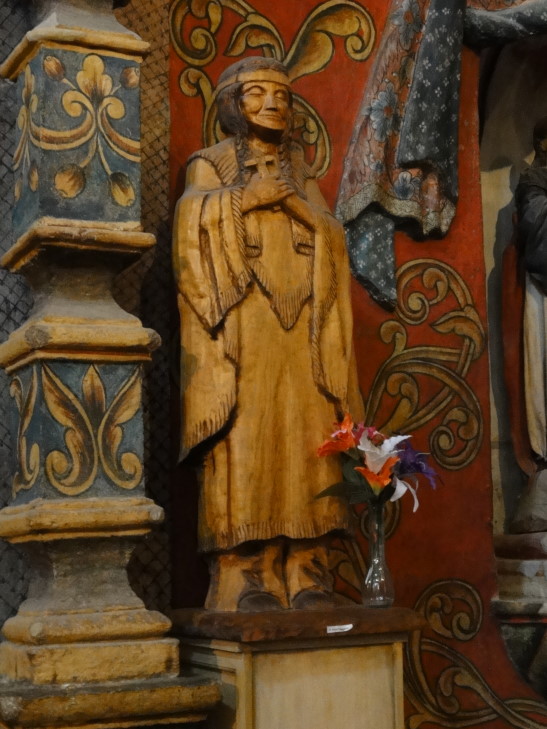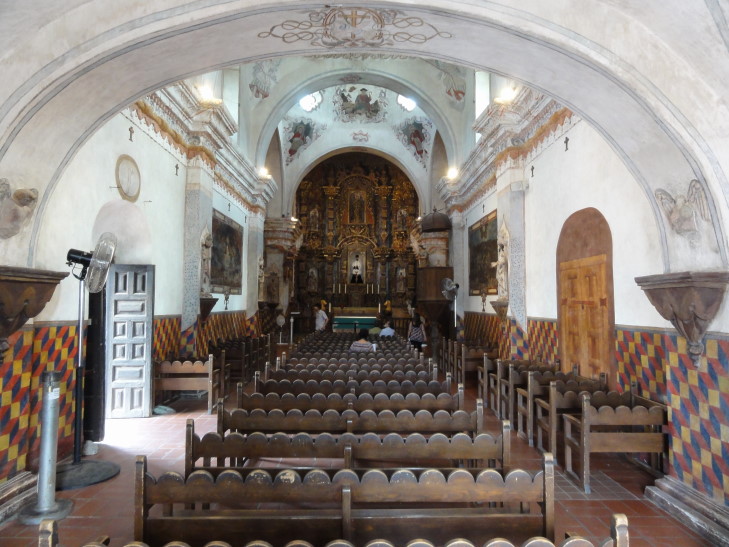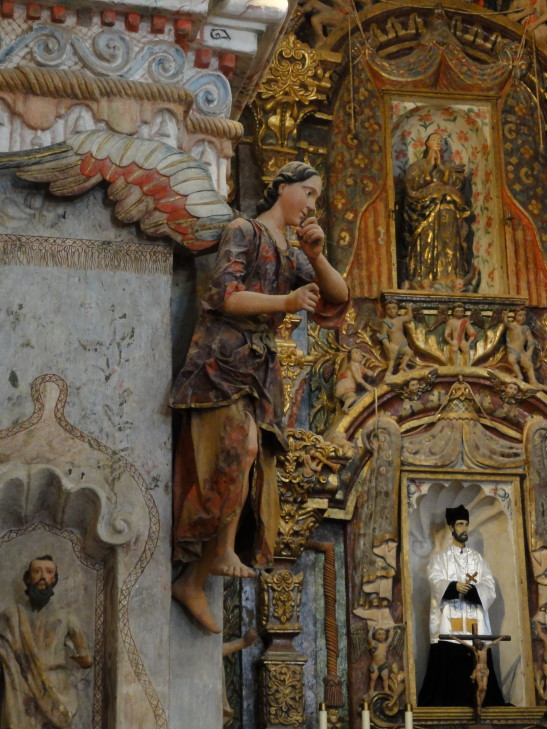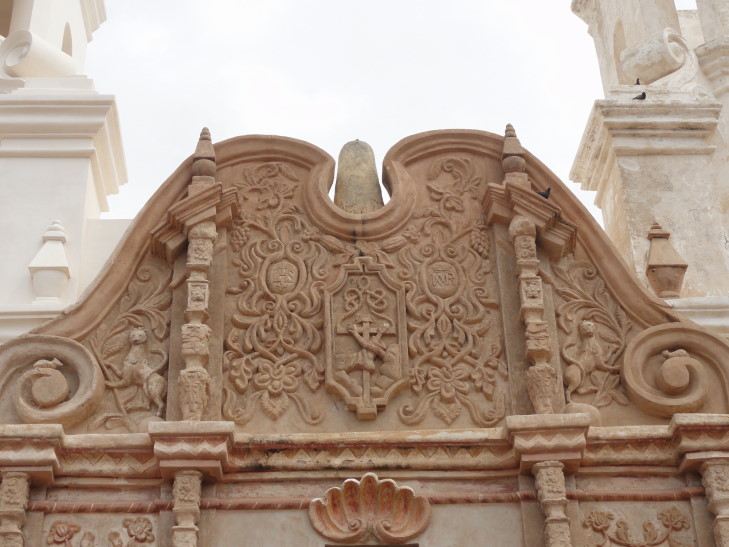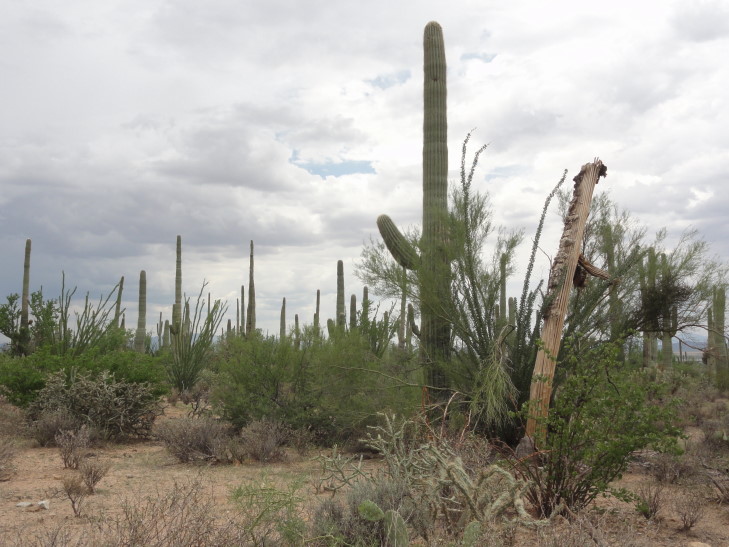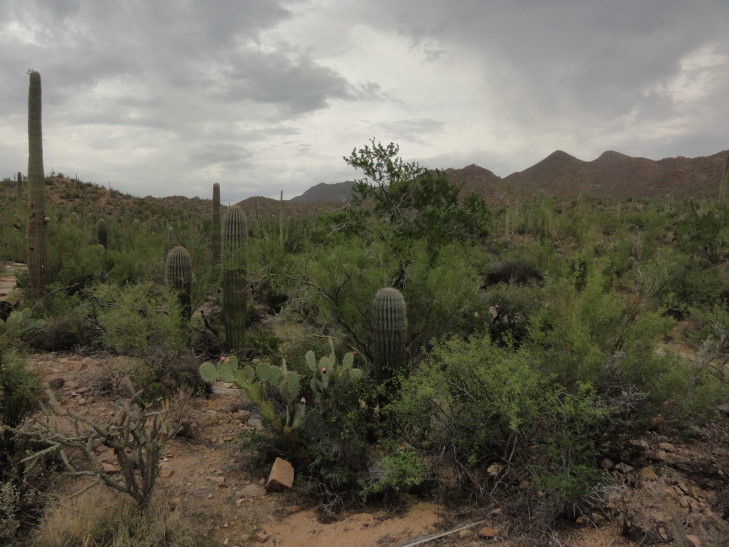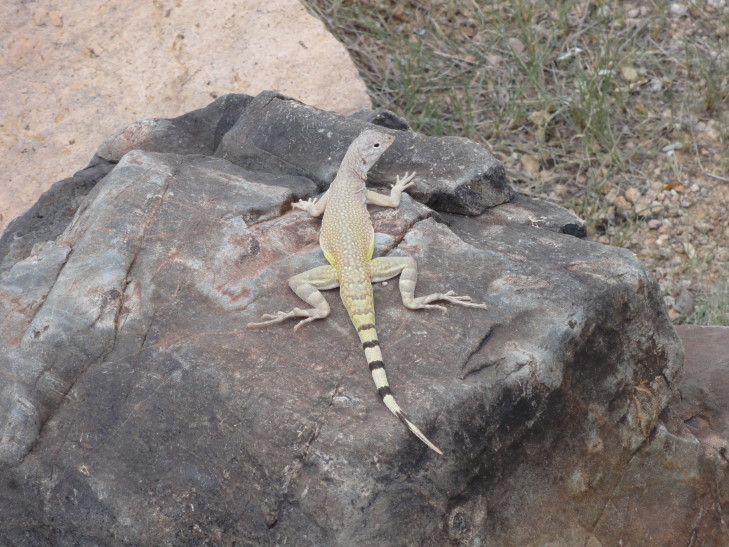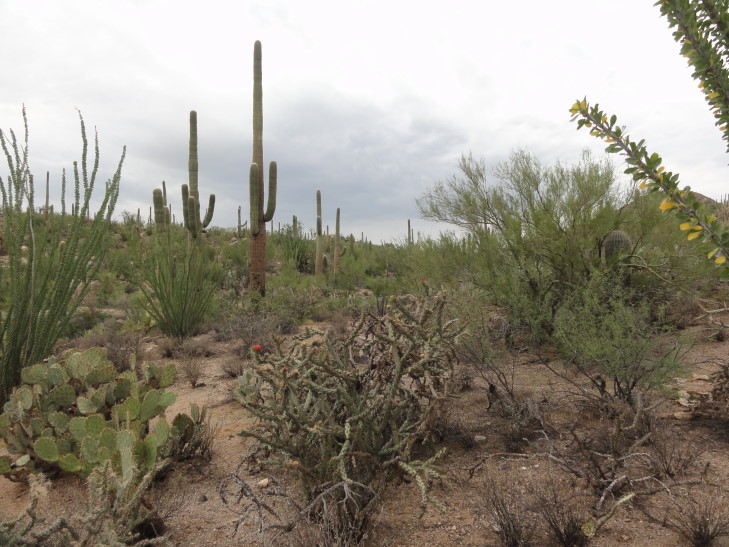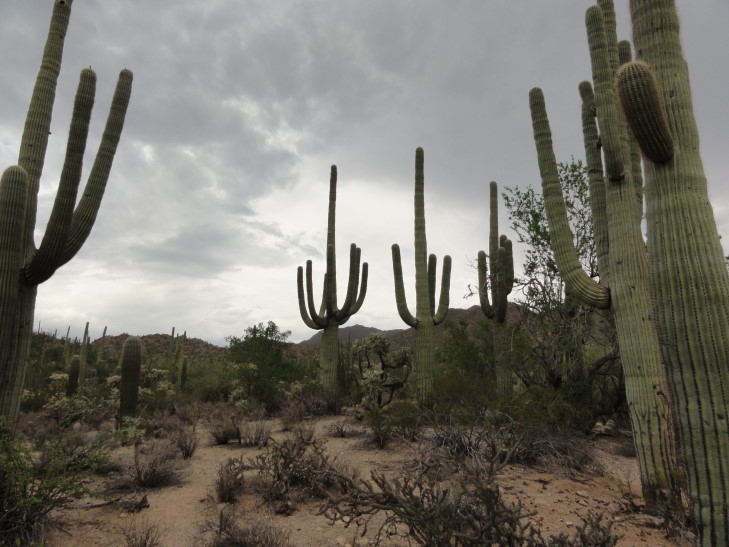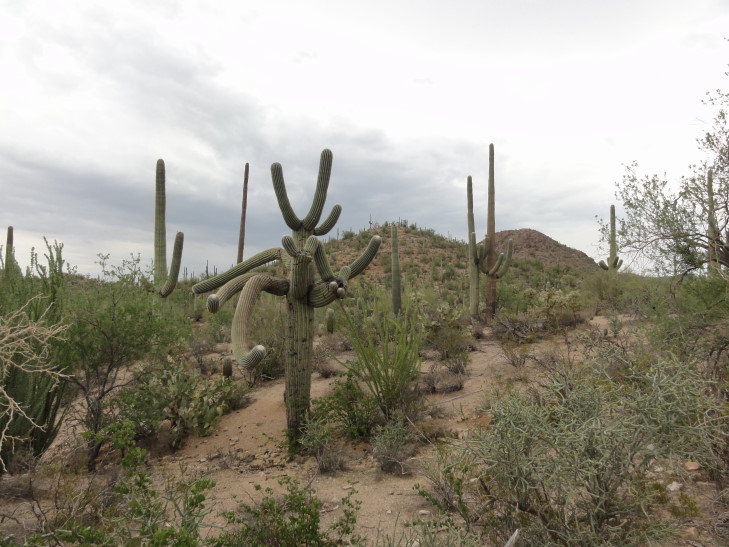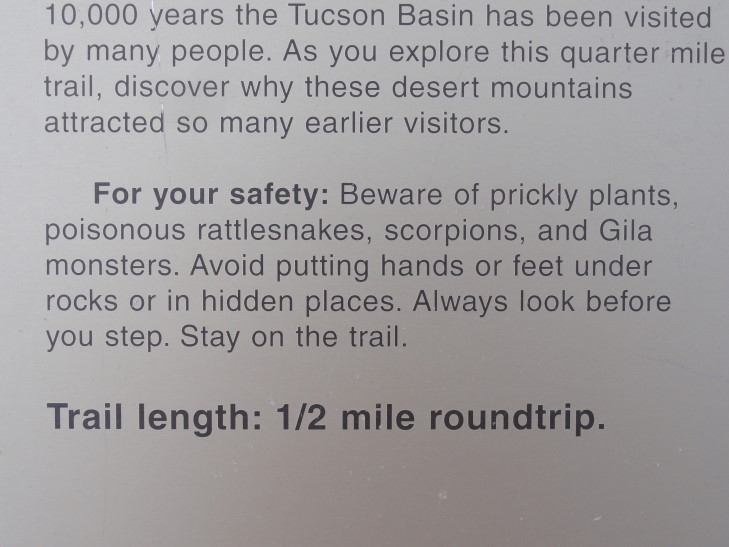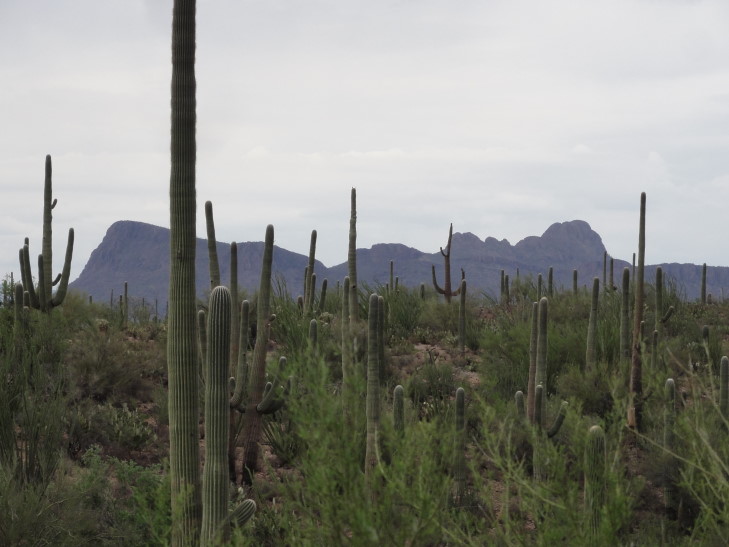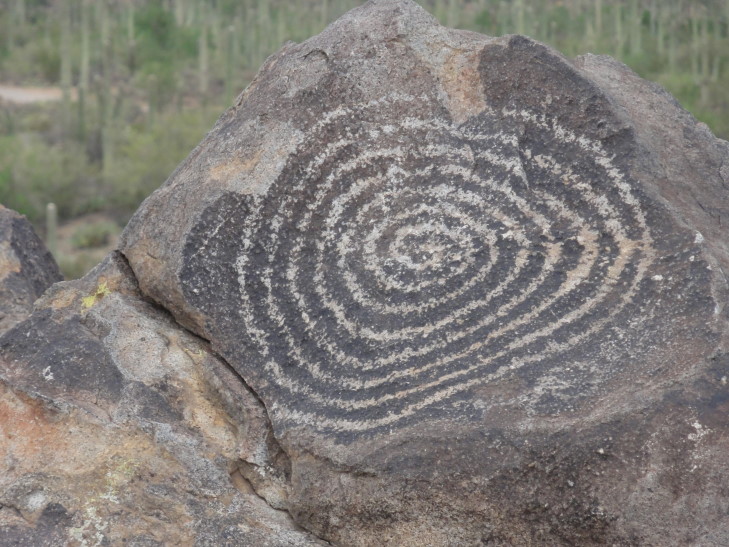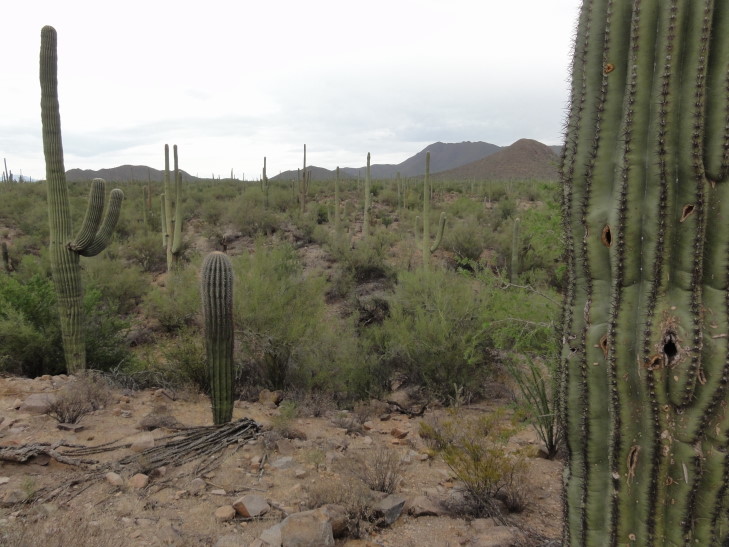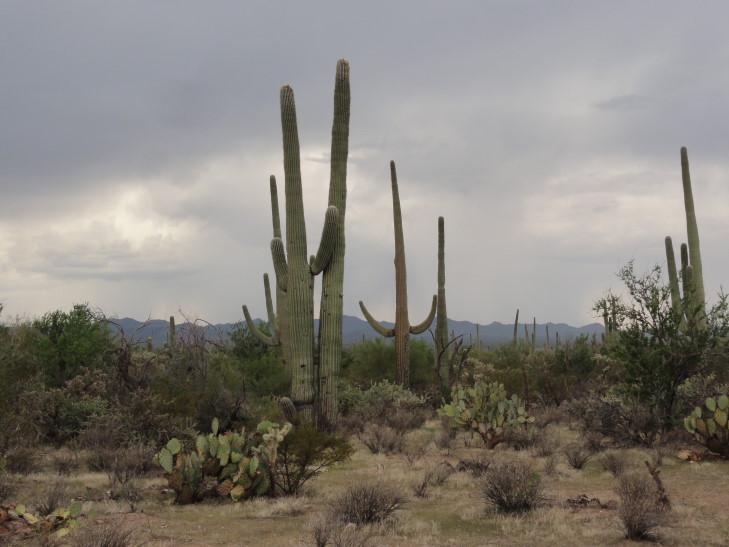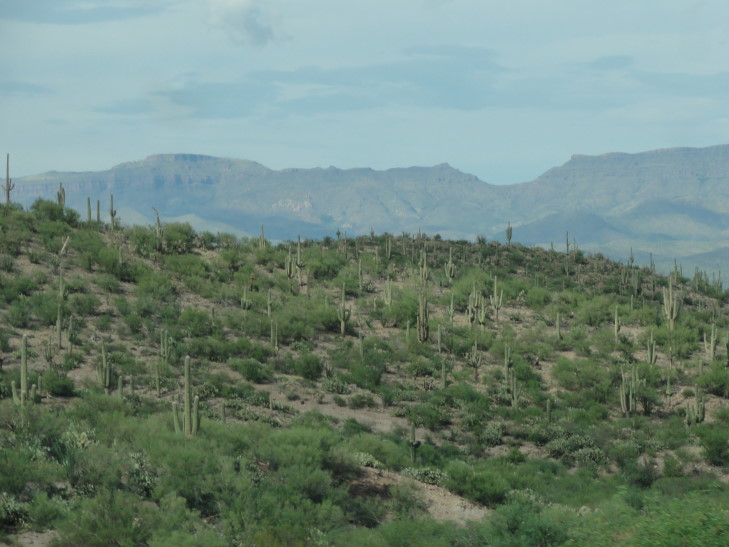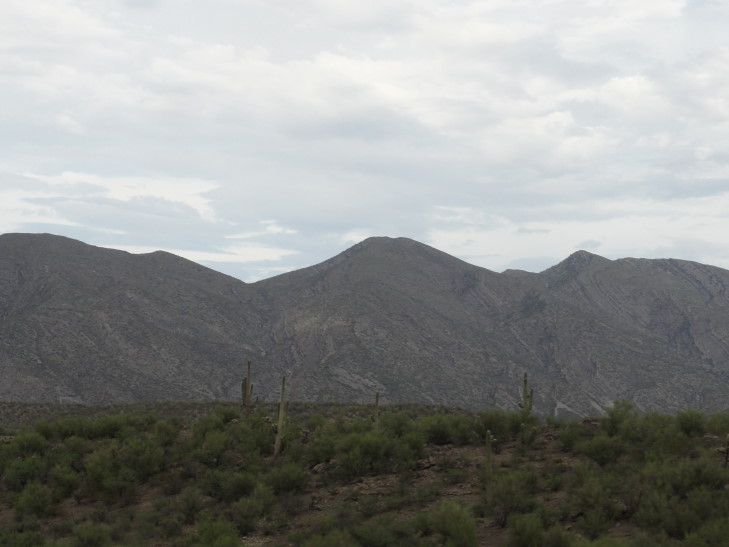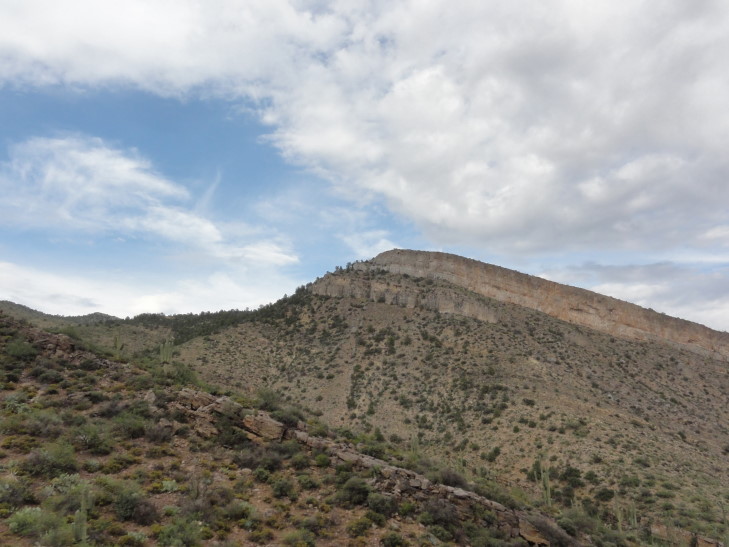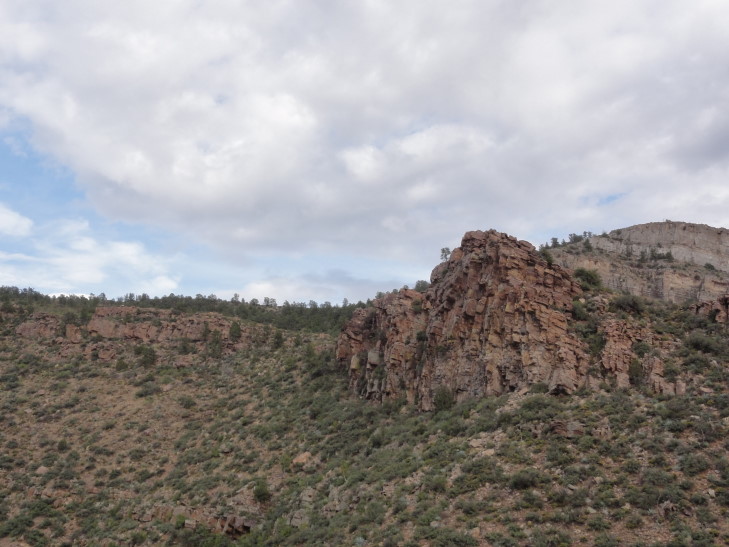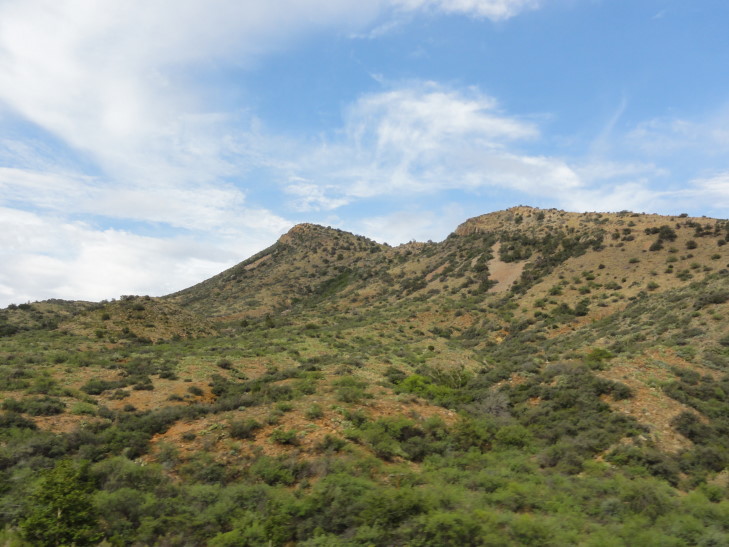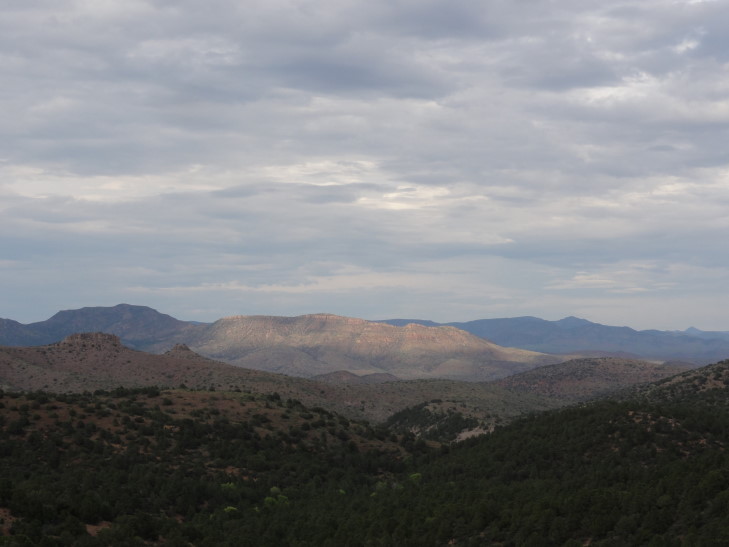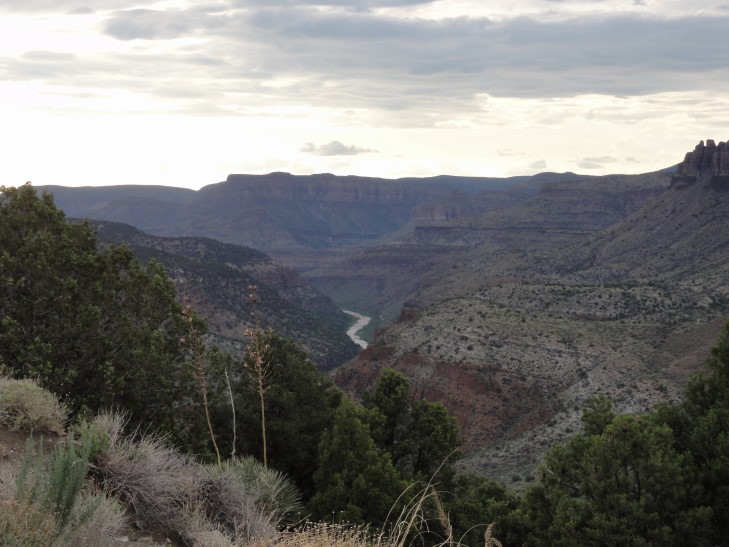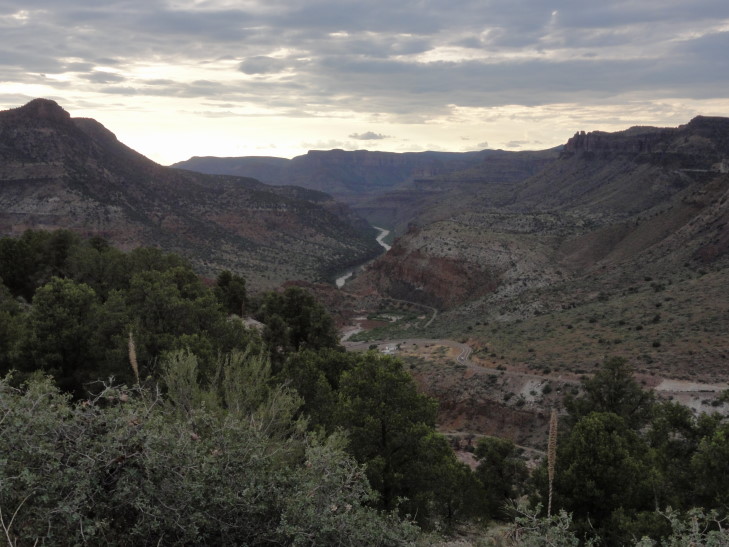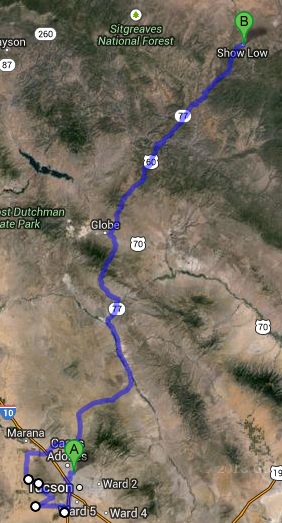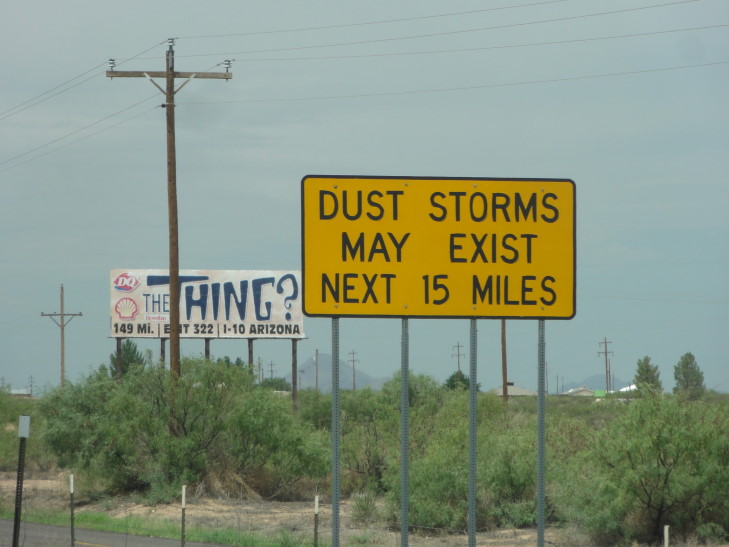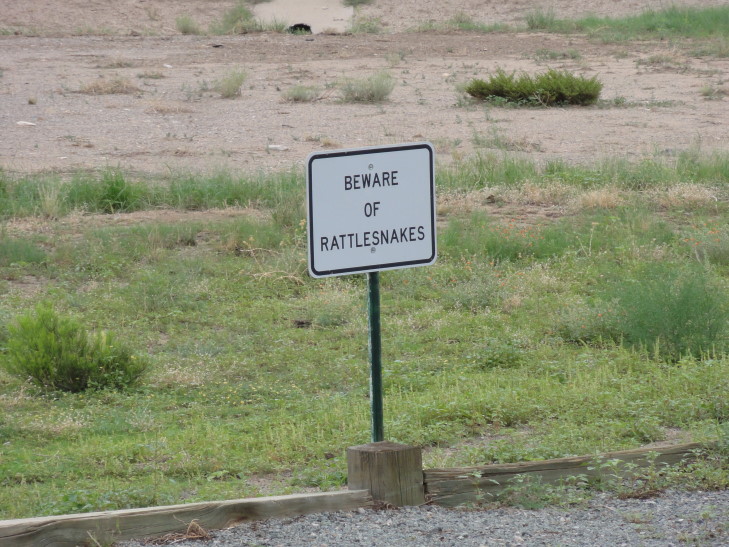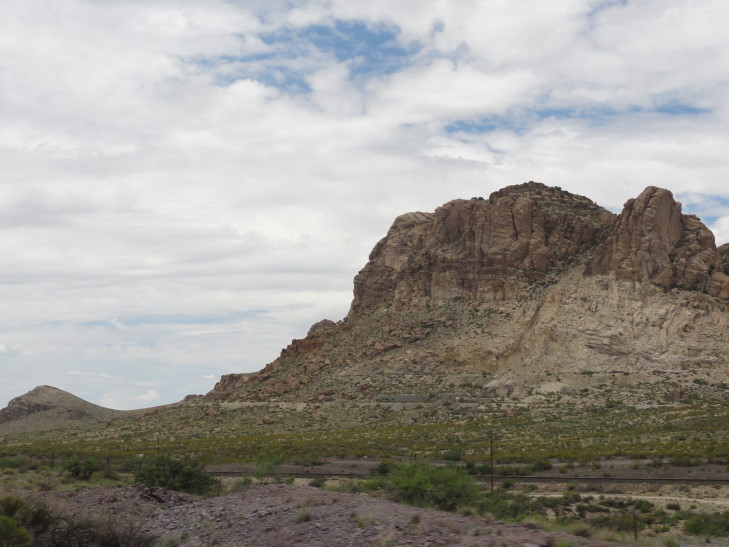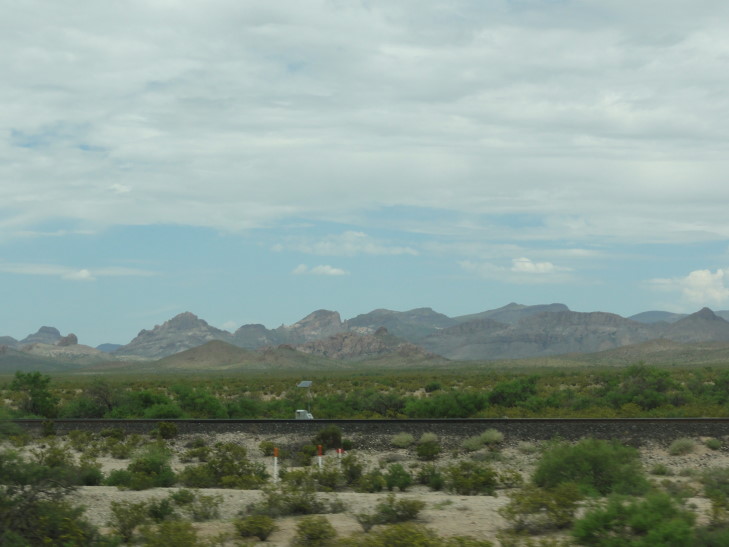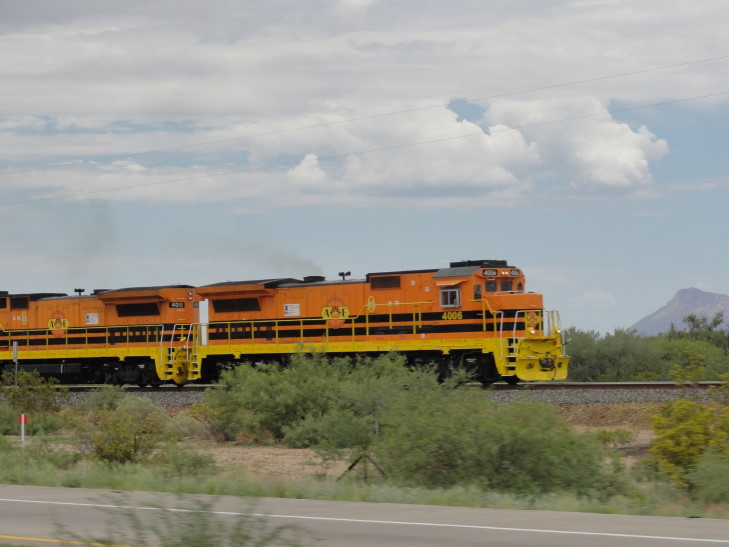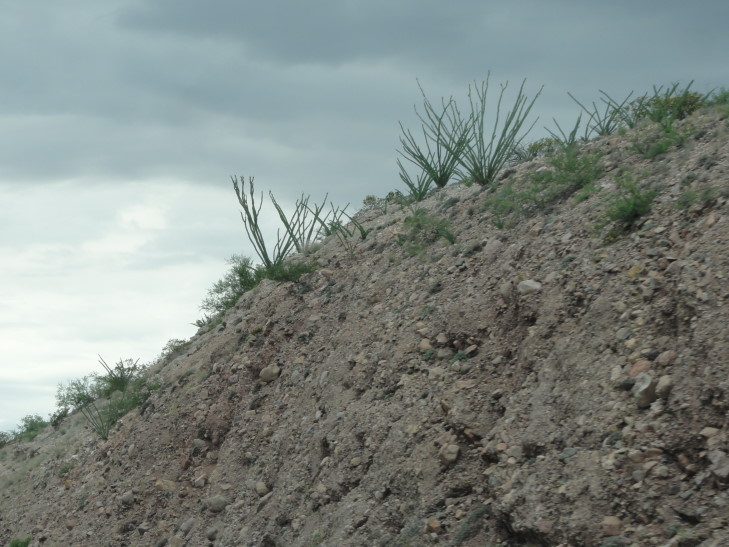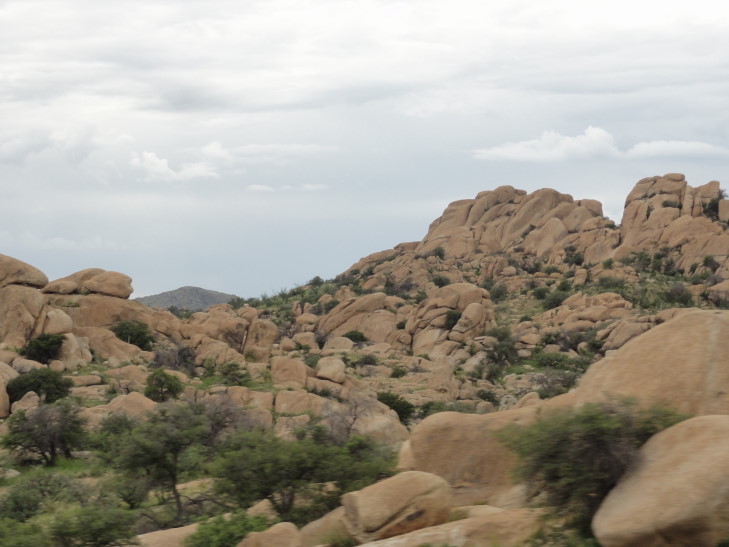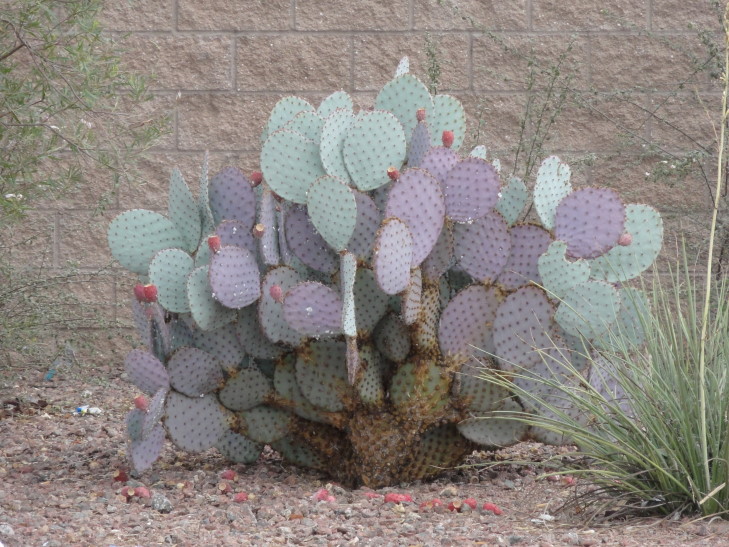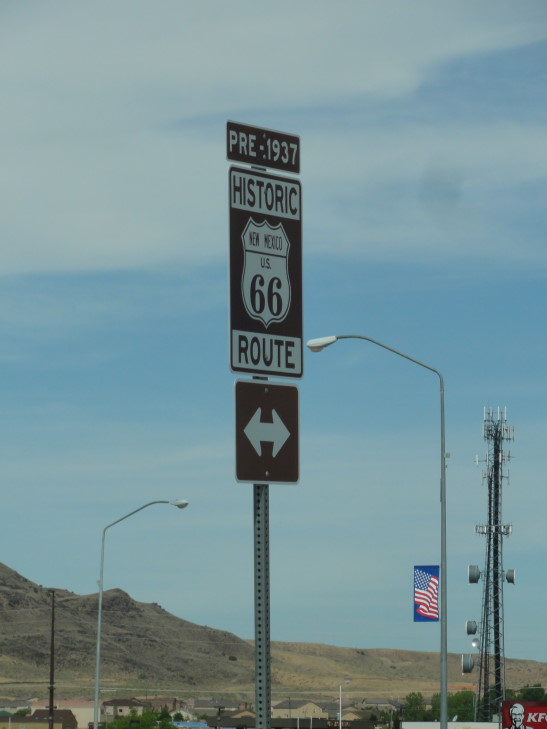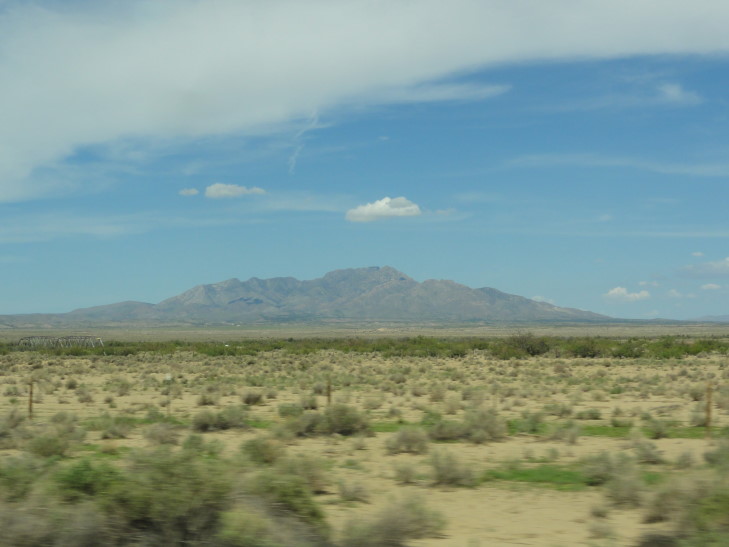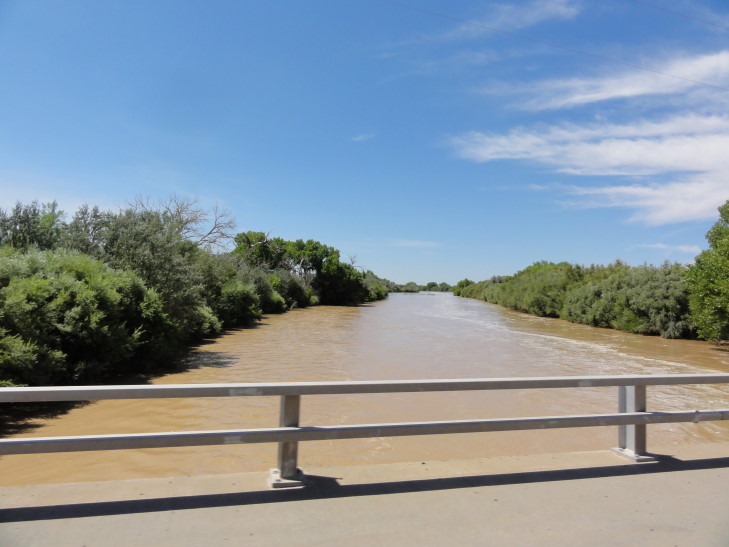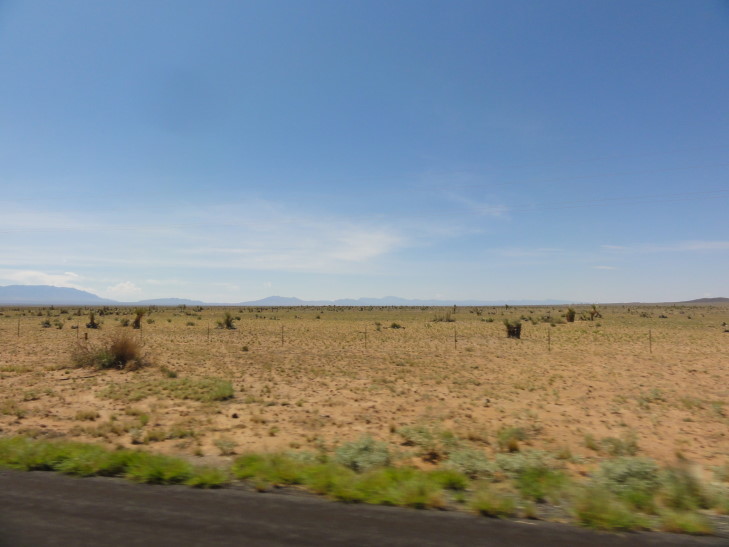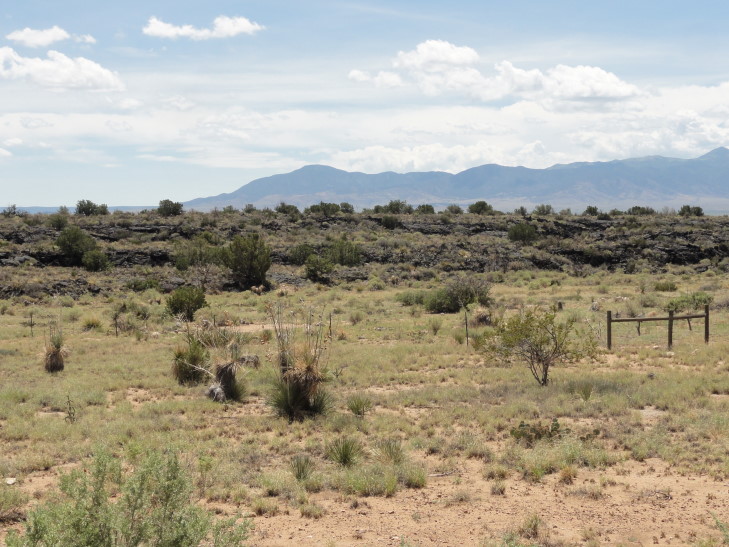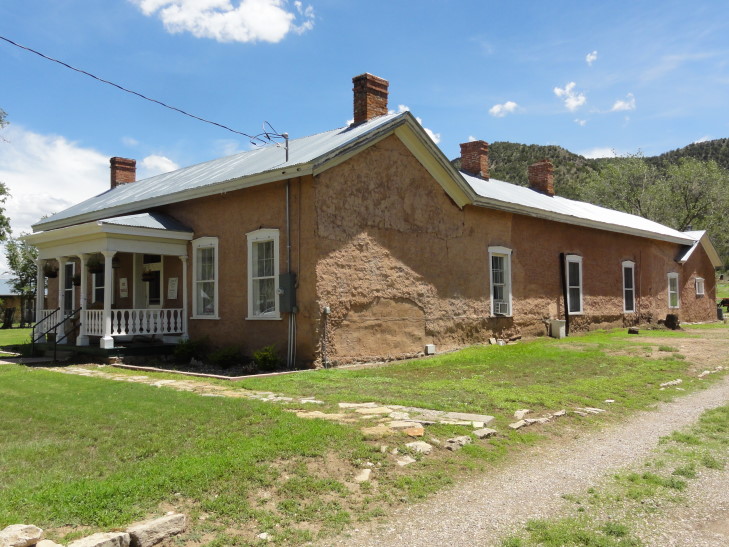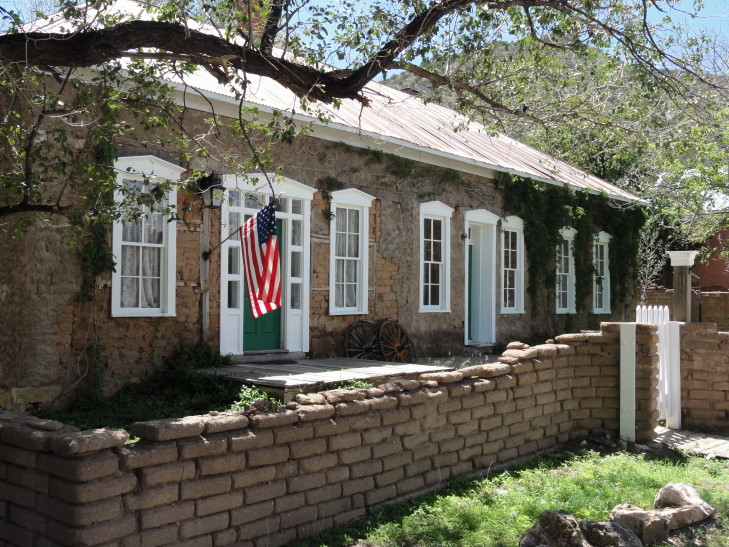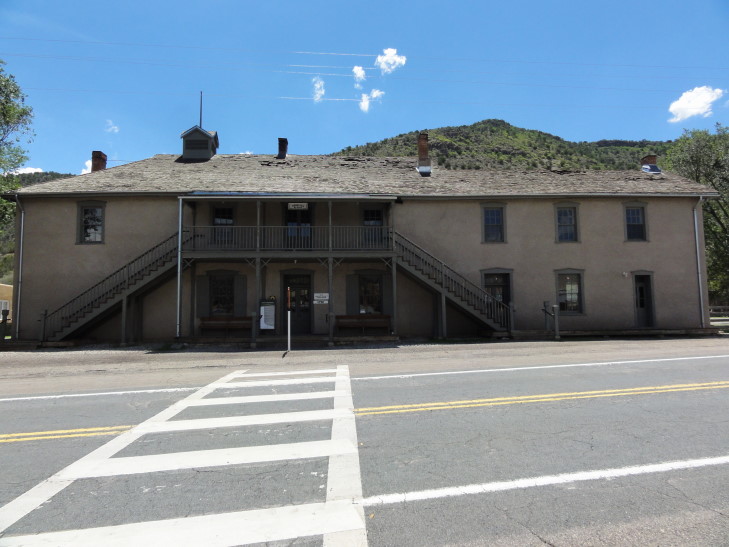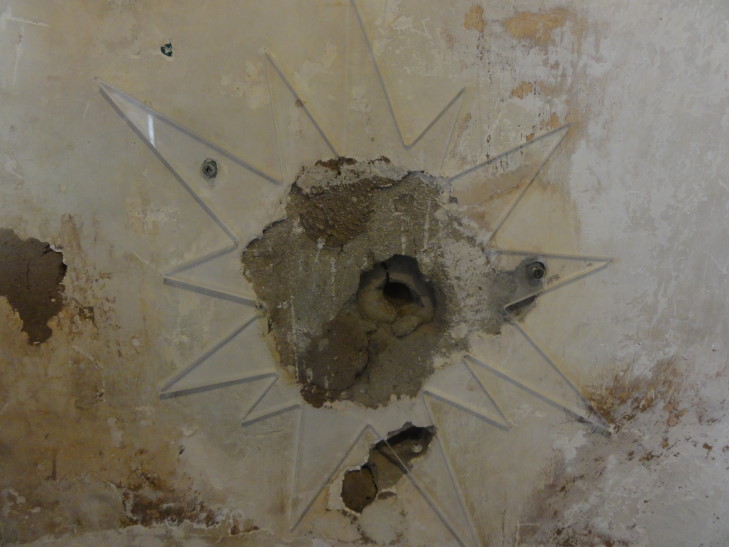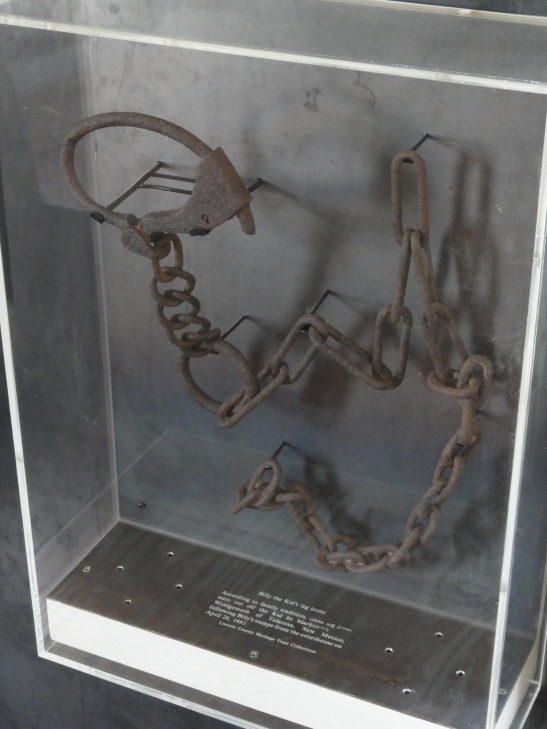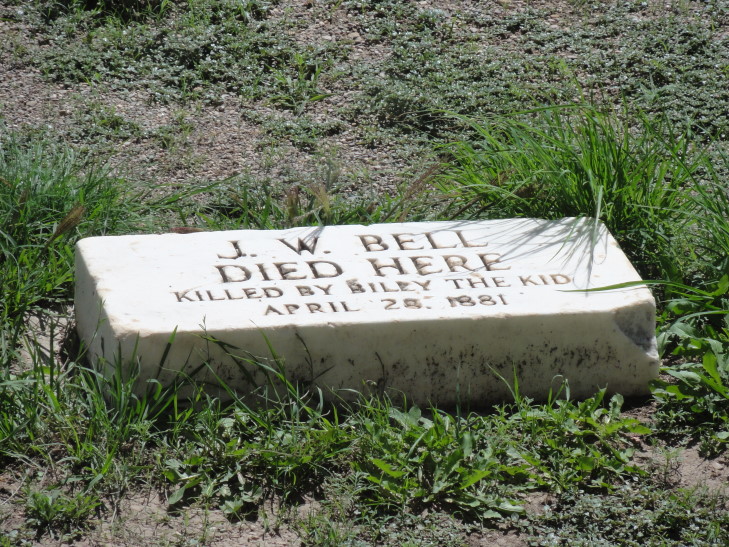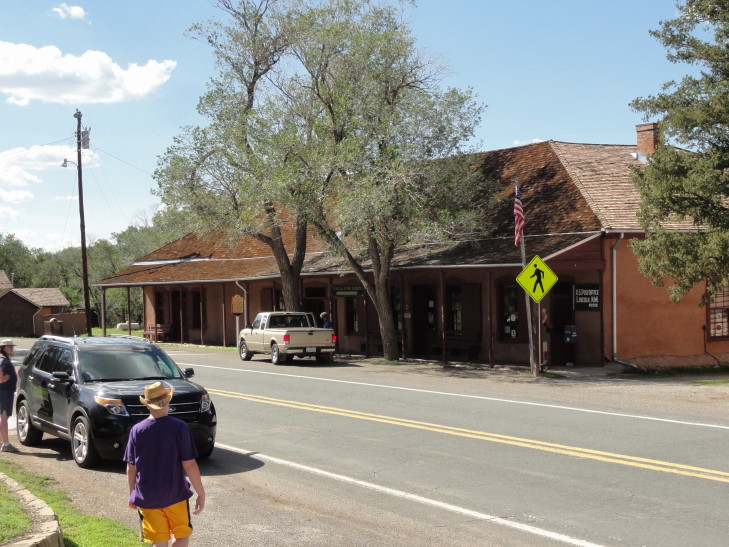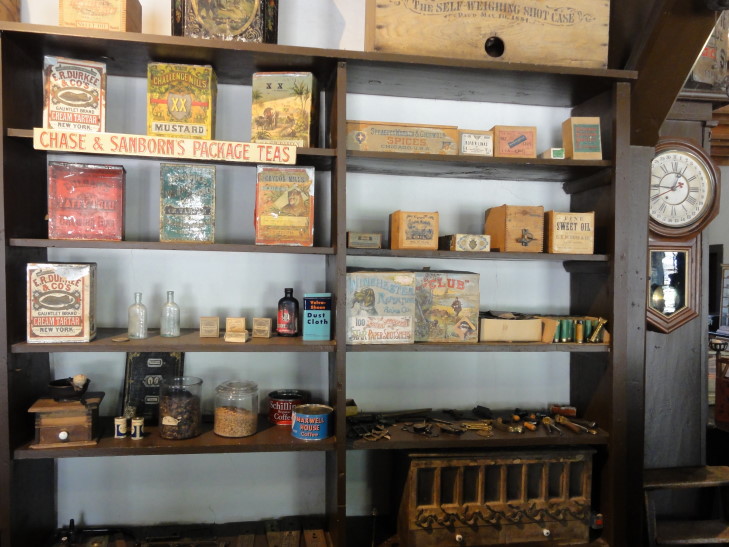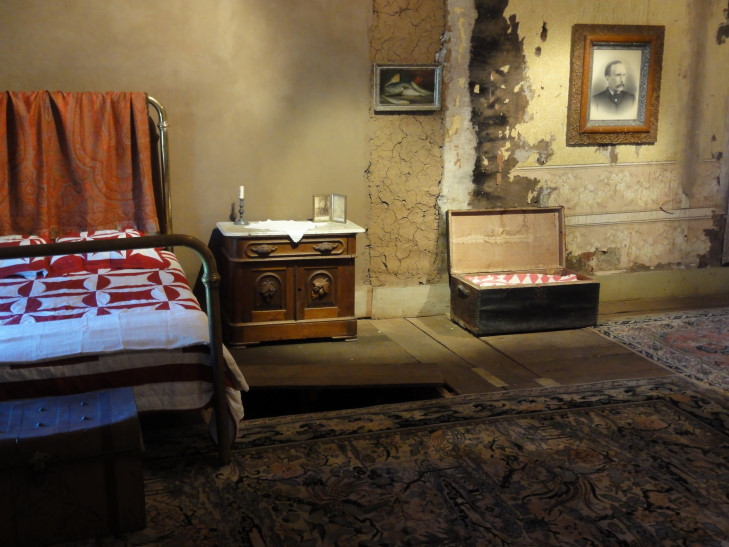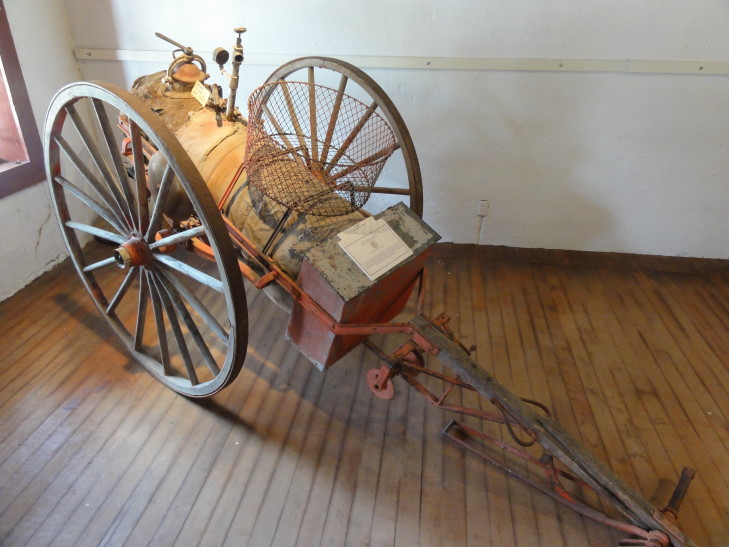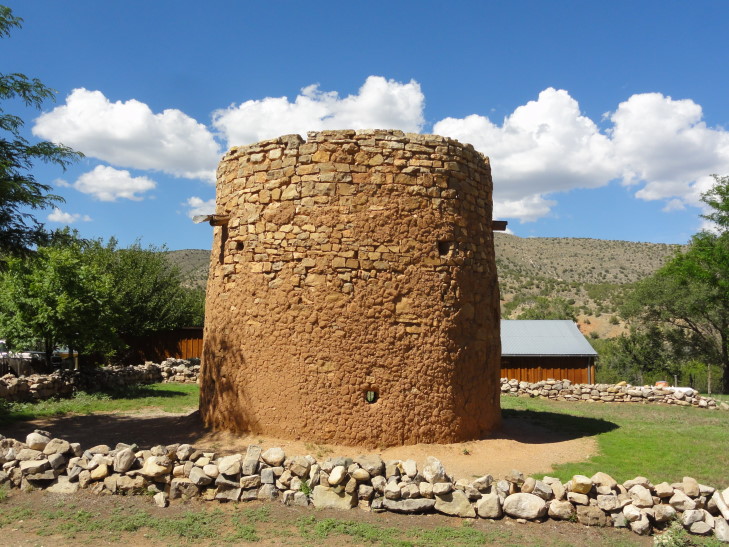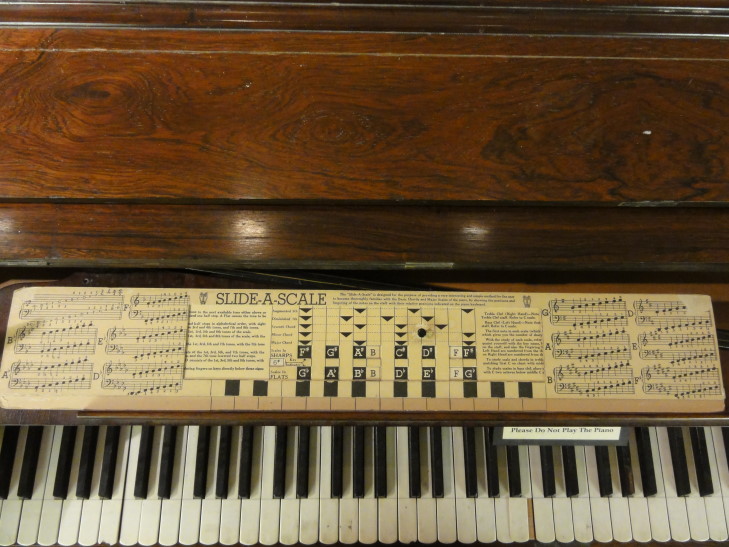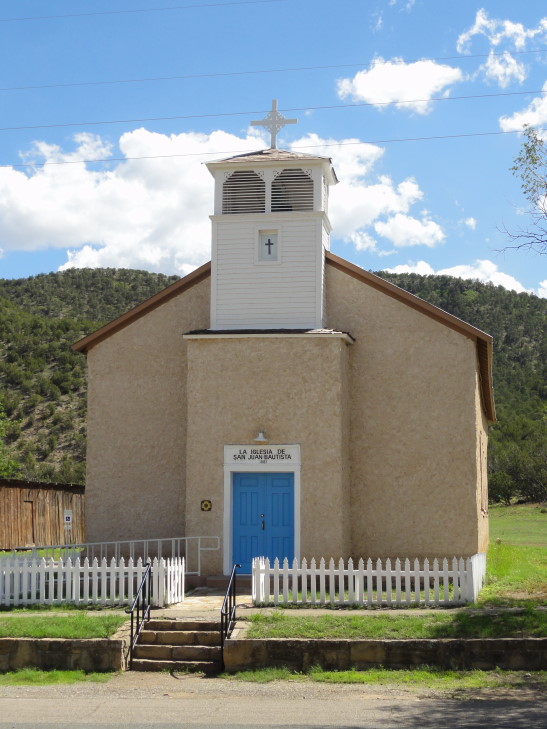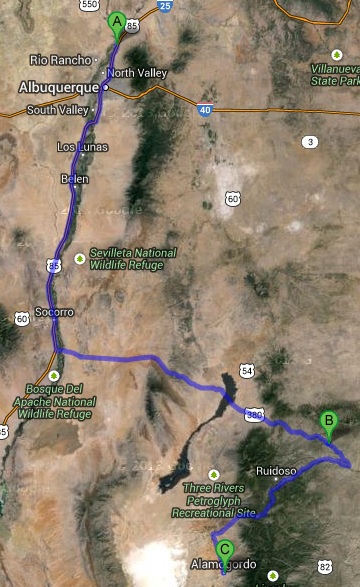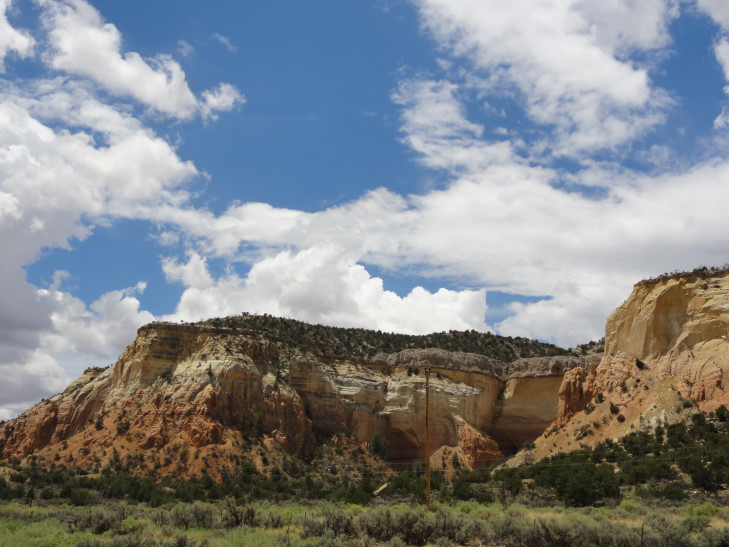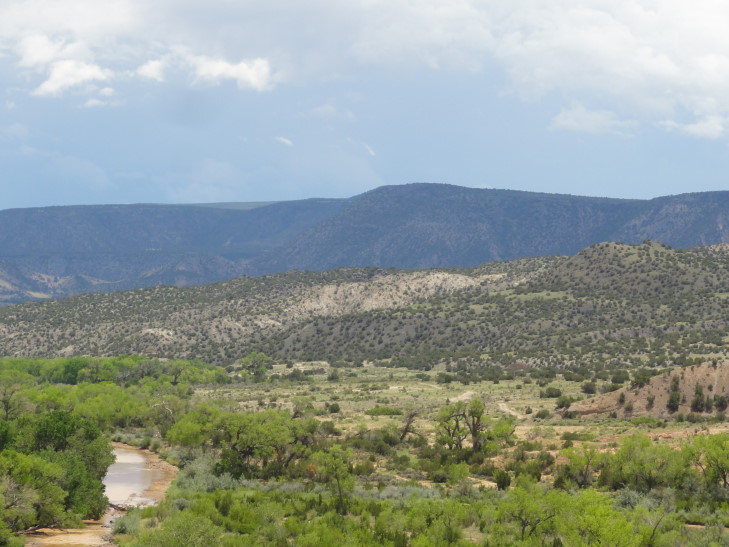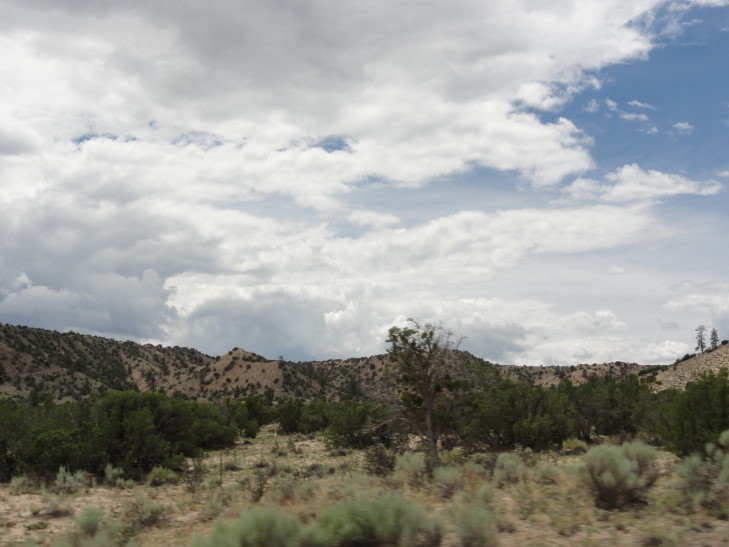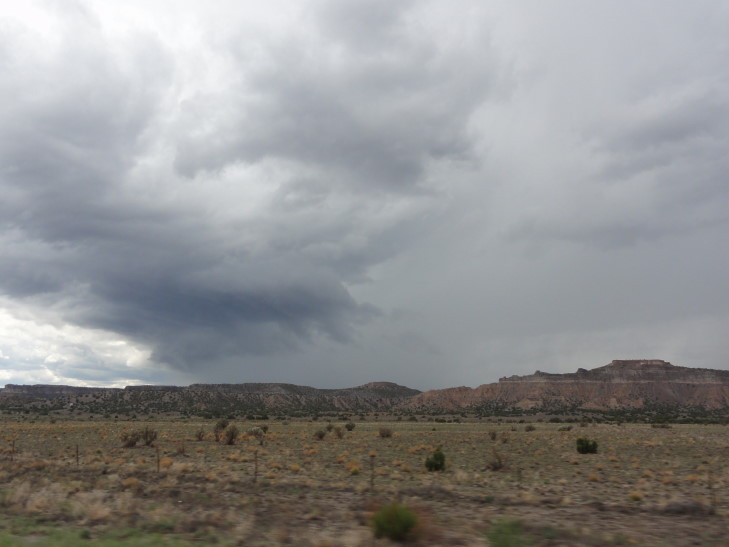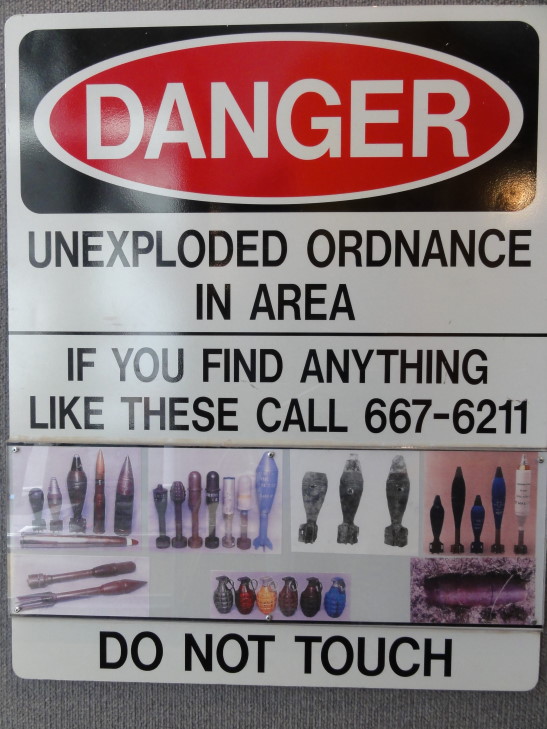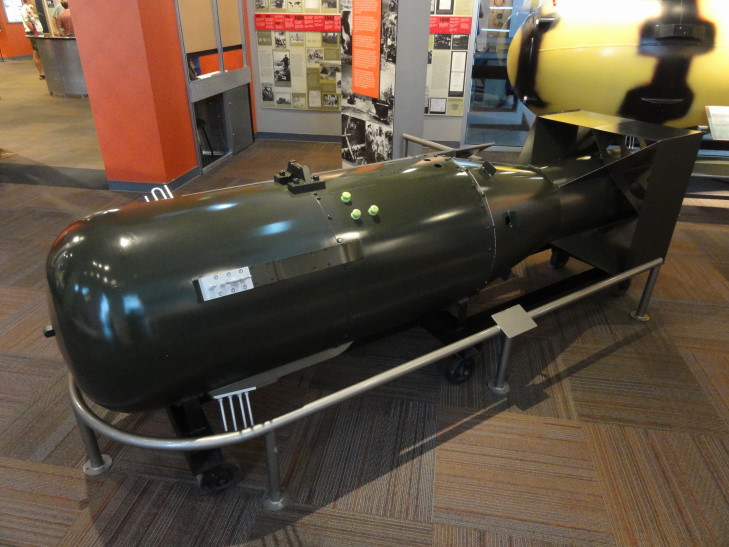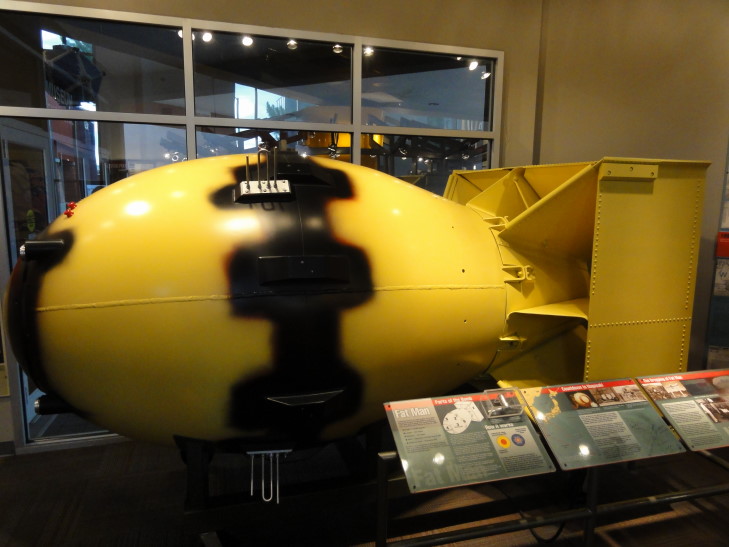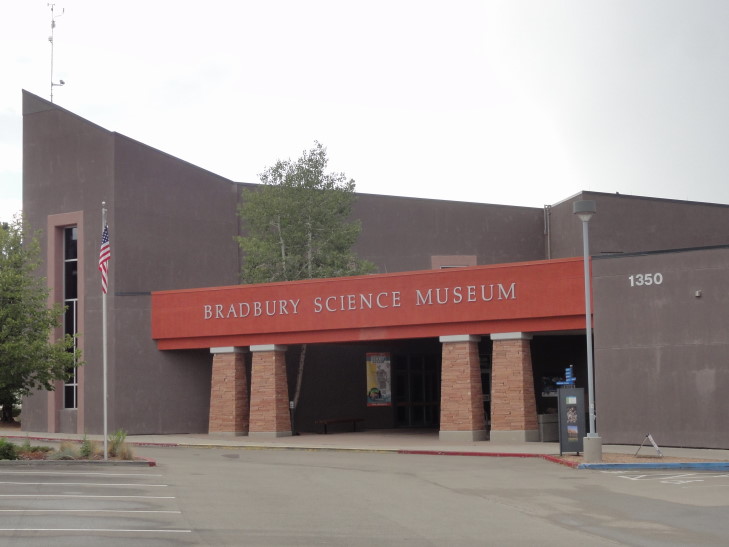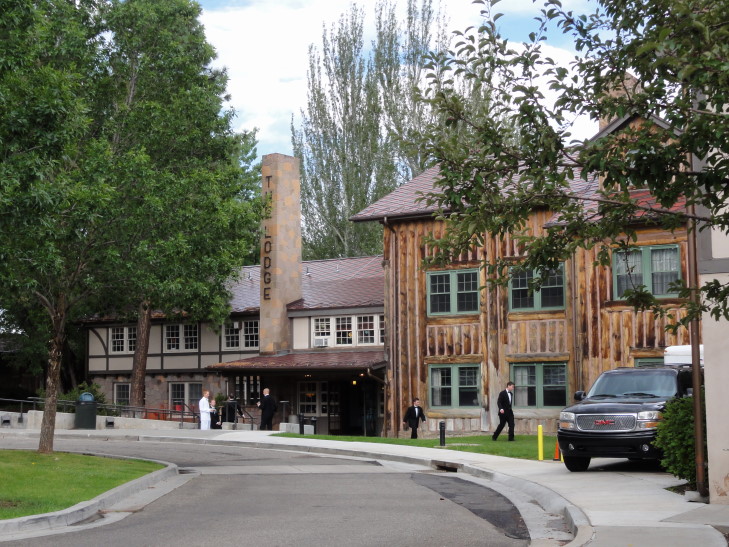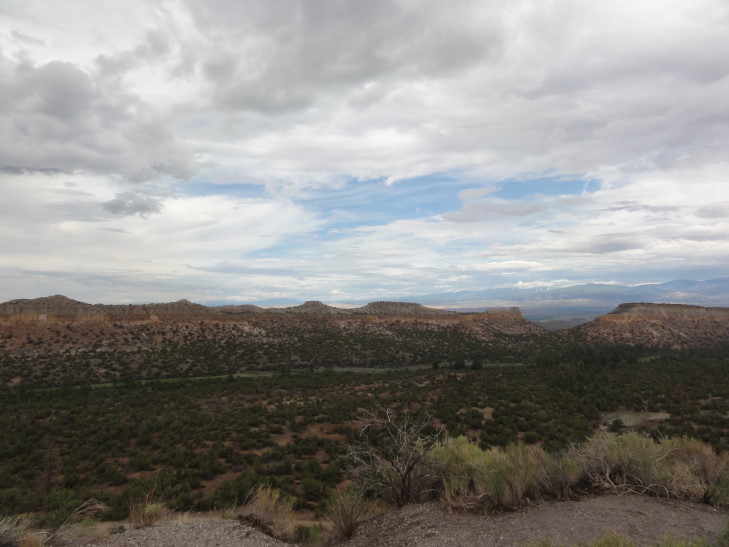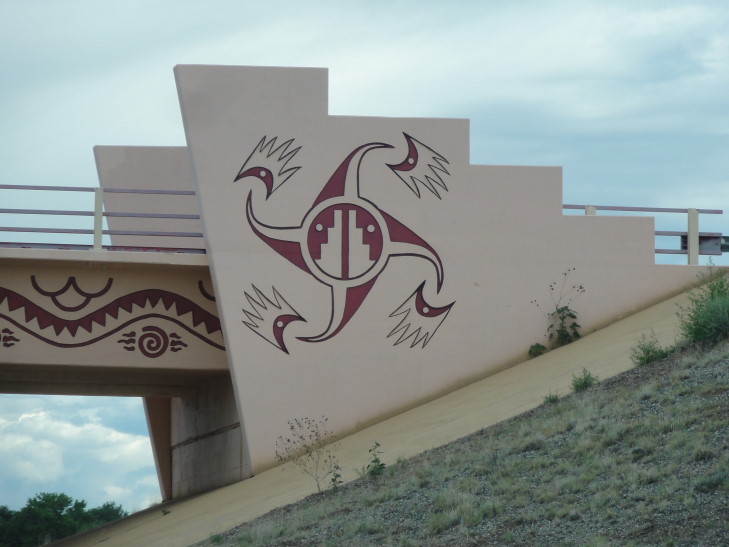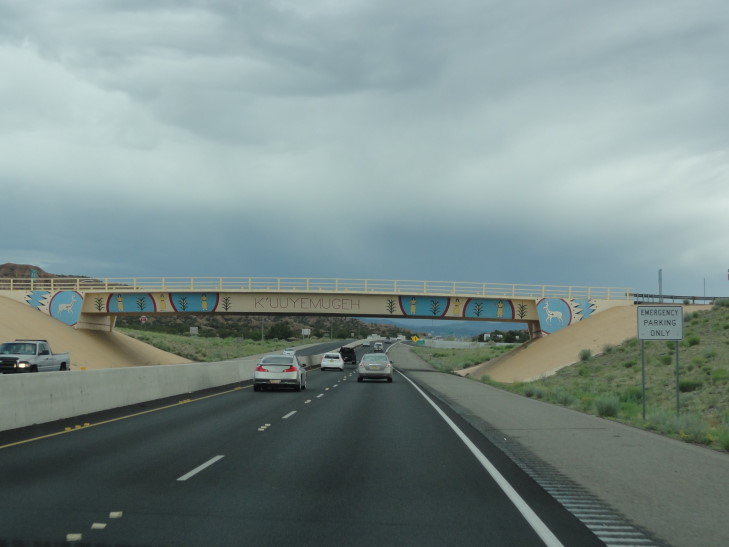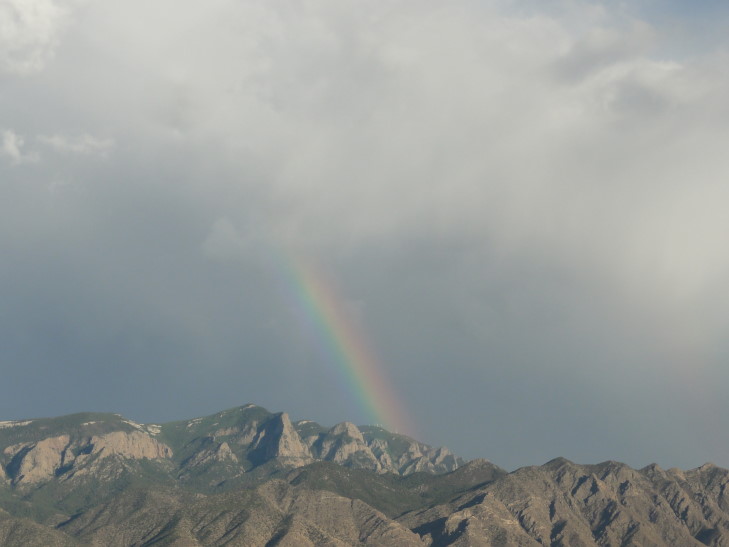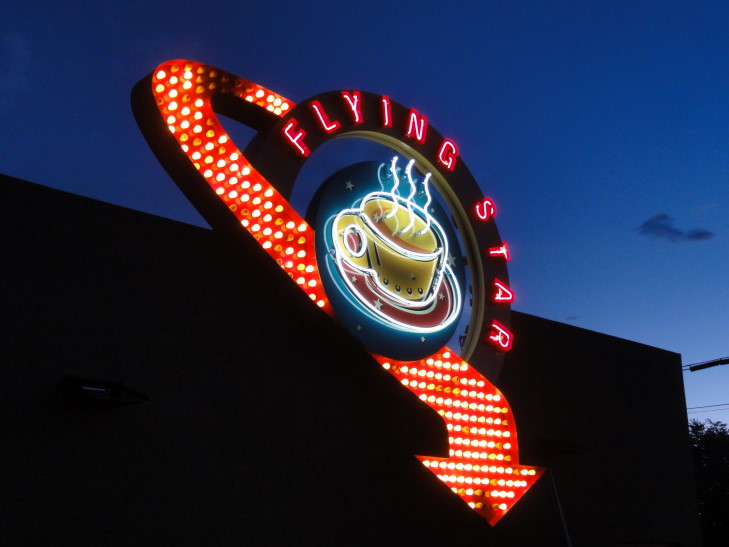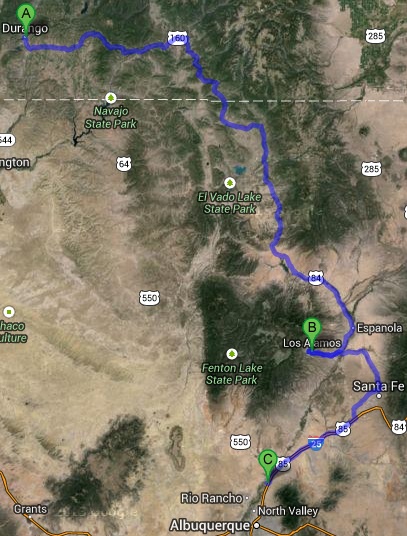Since yesterday was so light in terms of activities we got started super early. After eating our Holiday Inn Express buffet (which was quite good) and checking out we headed out. Saw a ton of Sonora, Mexico license plates in the hotel parking lot. Headed south of Tucson to the Mission San Xavier del Bac, called the “White Dove of the Desert” by Ansel Adams. Interestingly, the signs to the mission gave their distance in kilometers and not miles.
We got our first view of the mission from a distance. Quite spectacular, particularly because it is not surrounded by tons of restaurants and businesses since it is located on a reservation. As it is summer the crowds were quite light. We visited the church and then the museum by ourselves, learning that it was founded by Jesuits in the early 1700s but the original mission was destroyed and re-built in the late 1700s (and by that time the Jesuits had been expelled by the Spanish crown, so the Franciscans replaced them). The mission was founded by the Jesuit priest Kino, who extensively explored the southwest and northern Mexico and founded at least twenty missions. Mom would be proud, I noted a plaque that used “effected” instead of “affected” and cringed…
Just as we were sitting down to a film about the mission the call went out that a free tour was assembling. Despite the kids’ (oh, OK, Addison’s) objection we decided to join it. The guide, a former professor at the University of Arizona who had moved to Tucson thirteen years prior and was a member of the mission, was excellent. He first led us through the museum and pointed out that Kino was Italian and had nearly died at 18. He promised if he recovered from his illness that he would join the Jesuits. Though he had hoped to be assigned to the Orient he was instead sent to the New World. He made the best of it as he contributed significantly to the body of knowledge about the southwest and was also the one that proved that California is not an island.
The original mission had fallen into ruin and was replaced in the late 1700s with a new one. That too fell into disrepair due to the Mexican Revolution in the 1820s and then the subsequent transfer of modern-day southern Arizona to the United States due to the Gadsden Purchase in 1853. The mission was used for shelter for years, the campfires’ soot blackening the walls. It was saved from complete ruin by the Bishop of Tucson in the early 1900s. Restoration in the 1990s removed much of the soot staining and some prior well-intentioned but poorly executed repairs.
Petitioners make pilgrimages to the mission and leave milagros, or charms, pinned to a statue of Saint Xavier. The charms are often fashioned to look like the thing that needs help — arms, hearts, homes, etc.
The guide pointed out many interesting things about the church itself. The architecture and gutters of the mission heavily borrowed from Moor influences and the interior was baroque. The altar was adorned with a cloth with a native symbol of a person in a maze. There were two golden lions, said to represent the kingdoms of Aragon and Castille, on either side of the altar. These, however, were not original — the originals were stolen in the 1980s by a man that was taken in by the mission and doing odd jobs (shades of Jean Valjean). A local artist commissioned new lions from a carver of carousel animals and painted them — turns out she is the mother of Gabrielle Giffords, the Arizona Representative shot a few years back. The church, being poor (they could not afford to finish their right tower), painted tile work on the walls as well as picture frames around their murals because they could not afford real tiles or wooden frames. In order to have the mission be as symmetrical as possible if there was a door on one side but not the other they’d paint a door on the wall. Finally, the church had a statue of a Mohawk woman that died of smallpox and was later sainted — St. Kateri — who has since become the patron saint of Indians.
Outside, the front of the church had a cat carved on one side and a mouse on the other, the cat about to pounce on the mouse. Little details like that, or the mesquite doors’ handles being snakes or the rainbow carved over the doors, were really neat. After a few more pictures we decided it was time to head out and headed north and west towards Saguaro National Park West located to the west of Tucson. Just before getting to the park we passed Old Tucson, a place where several famous movies had been filmed like the Three Amigos and Outlaw Josey Wales. Unfortunately it was closed for the season.
I kind of fell in love with Saguaro cacti. They’re just so alien, yet, due to seeing them for years in westerns and the like, familiar. They live about 200 years or so, rising to about fifty feet or so. The visitor center provided an excellent overview of them and other cacti as well as some of the desert wildlife. There was an excellent film as well that ended with pulling the curtains up and revealing the desert beyond the center, just like we saw at Mount Saint Helens last year.
We decided to drive the loop road and take two walks. The first walk was a bit over a mile and ended in a beautiful overlook of the park. On the way we saw not only many Saguaro but also other cacti, prickly pear and chollo and yucca and even ones I called “Lorax” because they looked like something out of Dr. Seuss. We saw a couple of lizards, particularly in areas that were washes during heavy rains. One lizard would curl its tail up like a scorpion as it ran, I suppose as a defense mechanism. Addison and I took to calling them “Lorpions” and imagined further a tornado of scorpions, or “Scornado”, would be terrifying. I had a fun moment when I convinced Addison that I may finally have spotted a scorpion (a lie, we never did find one) and while he was looking at where I was pointing I poked him lightly in the ankle with a dry branch and scared the crap out of him. Joys of parenthood, gotta enjoy the little things.
We had seen two A10 Warthog jets fly over the mission earlier and while we were on the walk we saw another seven or eight jets fly over, this time fixed-wing combat craft — not sure what type exactly. Back on to animals, we saw some birds and even a jack rabbit with huge upright ears. We got lucky with the jack rabbit, I had hoped to spot one after talking with some folks from Alberta earlier on the hike who had seen one. They didn’t see scorpions or tarantulas either, sadly.
After the first walk we went around the loop some more before doing a half-mile trip up to the top of Signal Hill and back. Signal Hill is significant for its petroglyphs dating back at least a thousand years. Spiral patterns, some of animals, etc. All etched upon rocks that were part of a big pile of rocks with a sign stating “Rattlesnake Area.” You don’t have to tell me twice, I stayed clear! While climbing up to Signal Hill we met some folks from Charlotte. Small world!
The whole time we were at Saguaro there were storms threatening. Despite making for some cruddy photography conditions it was pretty nice. They kept the temperatures down and the strong outflow breeze was very welcome. It finally started raining (dry Southwest, ha!) after we left the park and were getting some food at Subway before starting the long (three hour plus) drive to Show Low.
The drive along route 77 was breathtaking and, luckily, uneventful. We saw some huge yuccas by the side of the road (ten feet plus in height) and though Saguaros would thin out in spots they didn’t fully disappear until just south of Globe, nearly 100 miles north of Tucson. It was there that the terrain’s strata were clearly uplifted, about 30 degrees, and the elevation was enough to be hostile to the Saguaro. We drove alongside a canyon that had seen fire, it had even burnt the wooden supports for the guardrail to a crisp and had to be replaced. Globe was charming enough, I suppose — it had a McDonald’s to give Michelle some half-cut sweet tea for the remaining part of the drive as well as something I had not seen for years — a drive-in theater!
North of Globe the hills were more wooded. We soon came upon a gorgeous canyon, the Salt River Canyon. The road made several switchbacks to get to the bottom of the canyon, cross the river, then go back up to the rim on the other side. After that the forests became predominantly pine as we entered Show Low. Show Low got its name due to two people playing cards for ownership of a 1,000 acre ranch. The winner would be the one with the lowest card (“Show Low”), in this case a two of clubs — explaining why route 77 in town is called “Deuce of Clubs.”
As it was nightfall and we were hungry we first went to Sonic for dinner. We had waited a bit for our food when the waitress came out rolling on skates and tried to deliver our food to the wrong car, almost hitting the menu stand. When she realized it wasn’t the right car she tried to get back on the curb… and tripped, spilling the meal all over the other car’s hood. She was practically in tears, we felt bad for her. She offered to wash their car but they declined, saying it was going to rain soon anyhow. Another long wait and we get our food, turns out they decided to remove the charge for the food. Combine that with our hotel being free due to cashing in frequent stayer points and it was free room and board day!
